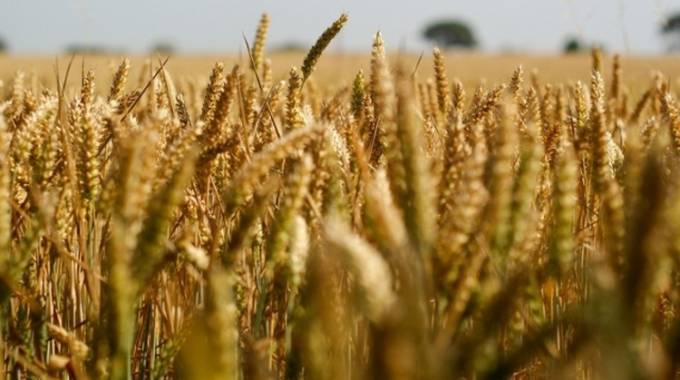
The Sunday Mail

Sunday Mail Reporter
ZIMBABWE plans to exponentially boost wheat production in the current planting season in order to eliminate imports of the cereal by promoting self-sufficiency.
Over 80 000 hectares have been identified under the winter wheat programme.
Government will fund production on 65 000 hectares, with the remainder supported by the private sector.
Production is estimated to reach over 415 000 tonnes against an annual demand of 400 000 tonnes.
Last year, winter wheat was grown on about 24 000 hectares, which produced less than 100 000 tonnes. Government and private millers had to meet national demand through imports.
Lands, Agriculture, Water and Rural Resettlement Deputy Minister Douglas Karoro told The Sunday Mail that wheat production this year was envisaged to make the country self-sufficient.
“The country has set a target of 80 000 hectares to be put under wheat this year,” he said.
“Out of this, we are expecting plus or minus 415 000 tonnes of wheat and that will go a long way in making the country avoid importing wheat.
“The 415 000 tonnes will suffice and properly serve the nation for a year and remove the need for importation of wheat. That is our main goal — to be self-sufficient in terms of wheat In terms of financing, we have Command (Smart) Agriculture in place to support the farmers with inputs such as fuel, fertilisers, seed, chemicals and everything that goes with farming. We also have support from private sector players.”
Vice President Dr Constantino Chiwenga recently announced wheat production targets for various provinces.
According to the official schedule, 18 000 hectares in Mashonaland Central will be put under the crop, with projections of a 93 600-tonne yield. Mashonaland West is eyeing 35 000 hectares to produce 182 000 tonnes, while Mashonaland East is set to plant the crop on 12 000 hectares, with a 62 400-tonne target.
Manicaland will reserve 7 000 hectares for wheat and expects a 36 400-tonne yield; Midlands (4 500ha and 23 400 tonnes); Masvingo (800ha and 4 160 tonnes), Matabeleland South (700ha and 2 000 tonnes) and Matabeleland North will grow 2 000ha, with an estimated harvest of 10 400 tonnes.
For nearly two decades, Zimbabwe imported between 70 percent and 75 percent of its wheat requirements.
Separately, Deputy Minister Karoro said there were teething challenges in the ongoing tobacco marketing season prompted by the guidelines meant to prevent the spread of Covid-19.
“We are having some challenges especially in terms of some of the guidelines that we have put in place to protect the farmers,” he said.
“Some of the farmers think they were put in place in order to fix them. We said no 2-tonne truck should bring tobacco to the floors mainly to decongest the floors in Harare, but they are taking it otherwise. We are having some challenges on that front.
“But we hope that if we continue to educate our farmers, the message will be driven home and they will understand why we only want seven-tonne trucks.
“The 2-tonne trucks can transport tobacco to auction floors outside Harare, but in Harare they need to organise themselves so that they get bigger trucks.”



